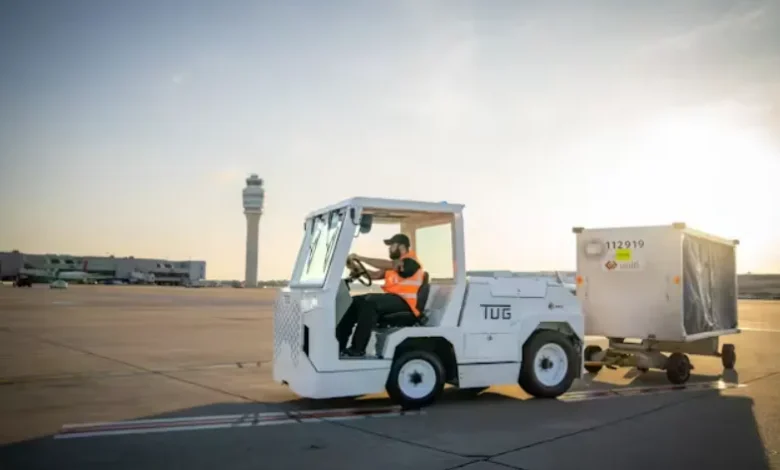What Are the Advances in Electric Baggage Tug Technology for Aircraft?

Significant technology improvements in electric baggage tugs have ushered in a new era of airport ground handling operations that are efficient, environmentally friendly, and safe. These contemporary aircraft tugs, with their array of cutting-edge features that raise the bar for this sector, have completely changed how baggage carts and containers are dragged across airport tarmacs for transportation purposes. Here are some of the advances in electric baggage tug technology that have made the aviation industry more efficient:
High-Torque Electric Motors:
Today’s electric luggage tugs are powered by high-torque motors that are designed to deliver exceptional efficiency and power. Even with high loads, these motors will guarantee smooth acceleration and economical travel as they readily pull large baggage carts and containers. As a result, they work wonderfully in the hectic and difficult setting of airport operations. There is less noise pollution on the tarmac and a better working environment for ground workers because electric motors are quieter than diesel engines.
Smart Traction Control Systems:
Electric luggage tugs now have cutting-edge traction control systems that offer unmatched accuracy and maneuverability. By carefully adjusting the power distribution to each wheel, these systems maximize traction on a variety of surfaces and in a range of weather scenarios. This helps to significantly lower the number of accidents and delays by ensuring steady and safe towing operations even in difficult situations like ice or wet asphalt. As a result, luggage handling operates smoothly and effectively, improving total operational efficiency.
Lithium-Ion Battery Technology:
The introduction of lithium-ion battery technology has changed everything for electric baggage tugs. These batteries provide faster charging speeds, greater energy density, and longer life cycles than traditional lead-acid batteries. This results in longer operating times, enabling aircraft baggage tugs to operate for longer amounts of time between recharges.
Faster charging periods also guarantee that tugs return to service promptly, reducing downtime and increasing production. Because lithium-ion batteries replace fossil fuels, they have a noticeable environmental impact and help create a more sustainable and greener airport habitat.
Regenerative Braking Systems:
Electric luggage tugs now have regenerative braking systems installed in order to maximize efficiency and minimize energy use. By means of these devices, the kinetic energy generated by the tug’s braking or deceleration is converted into electrical energy, which is then stored back in the batteries.
Since it not only increases battery life but also reduces brake wear and tear, this leads to reduced costs and a smaller environmental impact. Regenerative braking is one example of the aviation industry’s commitment to reducing its carbon emissions and developing environmentally friendly operations.
Integrated Safety Features:
Modern electric baggage tugs contain a variety of integrated safety elements to safeguard both the machinery and the crew. These features include automated braking systems that engage in an emergency, ergonomic design components that reduce operator fatigue and pain, and object detection sensors that notify operators of possible crashes. Further raising safety standards, modern telematics systems also offer real-time monitoring and diagnostics, enabling preventive maintenance and guaranteeing optimal performance.
These safety features collectively create a secure and efficient working environment for baggage handling operations, reflecting the industry’s commitment to prioritizing safety and enhancing overall operational efficiency.
Remote Control and Autonomous Capabilities:
Contemporary electric luggage tugs offer increased efficacy and security with the addition of autonomous and remote control functions. Remote control allows employees to safely operate the tug while increasing visibility and lowering the possibility of mishaps. Autonomous modes streamline operations by enabling the tug to follow predefined routes on its own, reducing the need for human intervention.
This serves to improve the efficiency and dependability of the baggage handling process in addition to freeing up staff for other tasks. These features improve overall airport operations and the traveler experience by increasing operational efficiency and facilitating a more efficient and dependable baggage handling procedure.
Conclusion
Thanks to developments in electric luggage tow technology, airport ground handling operations have undergone a significant revolution. The aviation industry can benefit from these tugs in their pursuit of sustainable operations due to their increased operational flexibility, decreased emissions, enhanced safety, and superior efficiency. As these technologies advance, airport ground handling should become more ecologically friendly and efficient.

